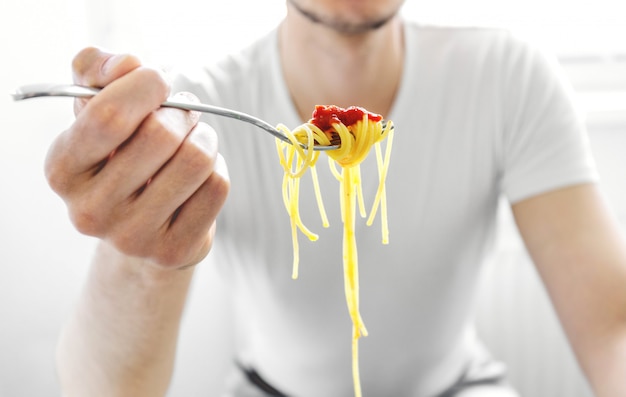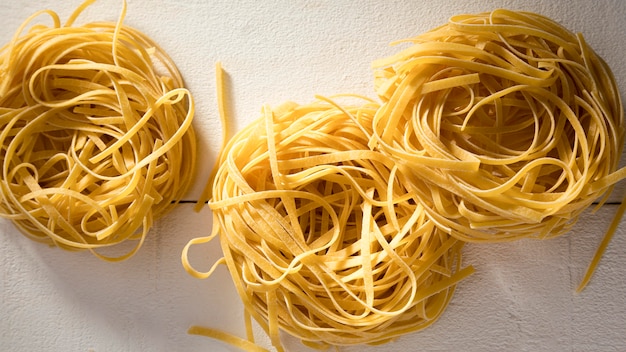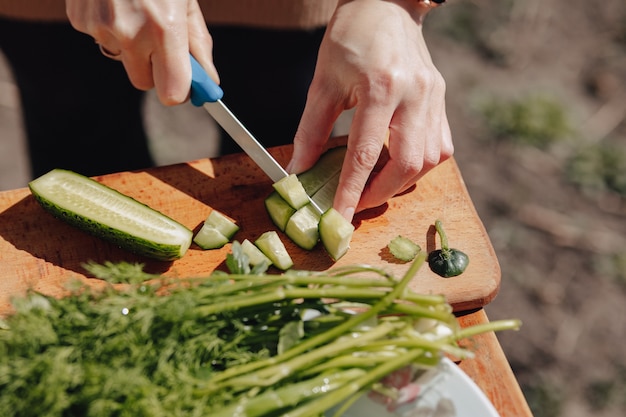As a self-proclaimed pasta enthusiast, I've spent countless hours in the kitchen perfecting my spaghetti game. I've braved the treacherous waters of overcooked mush and the daunting texture of al dente that feels like chewing on rubber bands. But through trial and error, I've discovered the secrets to achieving that perfect bite – the kind that leaves you wanting more. So, whether you're a seasoned cook or just starting out, let me guide you through the steps to crafting a plate of spaghetti that will make your taste buds sing.
Part 1: Setting the Stage for Spaghetti Success

Imagine this: You're standing in your kitchen, a steaming pot of water bubbling away, and a bag of spaghetti ready to be transformed into a culinary masterpiece. But before you take the plunge, it's important to gather the right tools and ingredients for a successful spaghetti journey.
1.1: The Pot – Your Spaghetti's Swimming Pool
You'll need a pot that's big enough for your spaghetti to swim freely. Think of it as a swimming pool for your noodles, where they can move around without getting cramped and cook evenly. I recommend a pot that holds at least 6-8 quarts, which gives your spaghetti ample space to stretch out and absorb the boiling water. A cramped pot leads to uneven cooking and a tangled mess of noodles, which no one wants.
1.2: The Water – The Lifeblood of Your Pasta
Water is the very essence of perfect spaghetti. It's not just about filling the pot; it's about creating a bubbling, boiling environment that cooks your noodles evenly and brings out their full potential. That's why I always bring the water to a rolling boil before adding the spaghetti. The heat penetrates the noodles quickly, ensuring they cook through without becoming mushy. Imagine your spaghetti as a sponge, soaking up the boiling water and becoming tender and flavorful.
1.3: Salt – The Secret Weapon of Flavor
Don't be shy with the salt! A generous pinch of salt, added to the boiling water, is not just about flavor; it's about creating a symphony of tastes. The salt helps the water penetrate the noodles, making them absorb more flavor from the sauce and enriching their own inherent taste. Think of it as a little bit of magic that transforms ordinary noodles into a delicious culinary adventure. Plus, it makes the water taste better, which is a bonus when you're about to slurp down those delicious noodles.
Part 2: The Noodles – Choosing Your Pasta Partners

Now that you've set the stage, it's time to choose your pasta partners: the spaghetti noodles. The spaghetti you select will play a pivotal role in the final result, so choose wisely.
2.1: Beyond Spaghetti – Exploring pasta shapes
While we're focusing on spaghetti, it's important to remember that there's a whole world of pasta shapes out there, each with its unique texture and taste. From the classic penne to the elegant fettuccine and the curly spirals of rotini, the possibilities are endless. Experiment with different shapes and discover your pasta preferences. Just be sure to adjust the cooking time based on the shape and thickness of the noodles.
2.2: Quality Matters – Durum Wheat is King
Don't settle for just any spaghetti. Look for high-quality pasta made from durum wheat. Durum wheat is the gold standard for pasta, known for its texture and flavor. Durum wheat pasta holds its shape better, resisting the mushy fate that can befall cheaper alternatives. It also has a richer flavor that complements any sauce you choose. Remember, you're investing in a culinary experience, and quality ingredients make all the difference.
Part 3: The Cooking Process – Orchestrating Spaghetti Symphony

The moment has arrived! You've got your boiling water, your high-quality spaghetti, and a sprinkle of salt. Now, it's time to orchestrate the spaghetti symphony, ensuring each noodle cooks to perfection.
3.1: The Grand Plunge – Gently Introduce Your Noodles
Once the water is roaring, it's time to introduce your spaghetti to the boiling bath. Gently lower the noodles into the pot, avoiding a sudden splash that could cool the water. Remember, you want to maintain that rolling boil to cook the noodles evenly. Make sure the noodles have plenty of space to move around in the pot. Don't overcrowd the pot, or the noodles will stick together and cook unevenly.
3.2: The Stir – Preventing Noodle Clumps
Give the noodles a gentle stir right after adding them to the pot. This helps prevent them from clumping together and ensures they cook evenly. Continue stirring occasionally throughout the cooking process to prevent the noodles from sticking to the bottom of the pot. Remember, you want every noodle to achieve that perfect texture, not just the ones on the top.
3.3: The Timer – A Guideline, Not a Dictator
The package will typically recommend a cooking time, but this is merely a guideline. Every batch of pasta is slightly different, and the cooking time can vary based on the thickness of the noodles and the brand. The real test lies in your taste buds. Remember, you want your spaghetti to be "al dente," which means firm to the bite, but not hard or rubbery. It's a delicate balance of texture that takes practice to master.
If you're unsure, take a single noodle, remove it from the pot, and bite into it. If it's still hard, continue cooking for another minute or two. Remember, you can always cook the noodles a little longer, but you can't undo overcooked noodles. So, it's better to err on the side of slightly undercooked.
Part 4: The Drain – Removing the Excess Water
The noodles are cooked to your liking, and now it's time for the drain. This is the final step before your spaghetti is ready to be tossed with sauce.
4.1: The Drain – Quick and Efficient
Pour the spaghetti into a colander placed over the sink. Let the water drain completely, but don't linger too long. You want the noodles to retain a little bit of the starchy water, which will help the sauce cling to them.
4.2: A Trick for Extra Flavor – pasta water
Here's a secret weapon: save a spoonful of the pasta water! It might seem odd, but adding a spoonful of the pasta water to your sauce will boost its flavor and create a creamier texture. The starch in the pasta water is pure magic, transforming your sauce from ordinary to extraordinary.
Part 5: The Sauce – Choosing Your Spaghetti Partner
You've conquered the art of cooking spaghetti, and now it's time to choose your perfect sauce partner. The world of pasta sauces is vast and delicious, with endless options to explore.
5.1: A Symphony of Flavors – Exploring Sauce Options
From classic tomato sauce to rich Alfredo, creamy pesto to spicy arrabiata, the possibilities are endless. Experiment with different flavors, textures, and ingredients to find your perfect spaghetti pairing. Don't be afraid to step outside your comfort zone and try something new. You might discover your next favorite sauce!
5.2: Combining Sauce and Noodles – The Final Toss
Once you've chosen your sauce, toss it with the drained spaghetti. The warmth of the noodles will help the sauce melt and cling to the pasta, creating a luscious coating. Remember that spoonful of pasta water? Now is the time to add it to the sauce. It will help the sauce blend with the noodles and create a smooth, creamy texture. Make sure to toss the noodles and sauce together until every strand is coated in deliciousness.
Part 6: Serving Your Masterpiece – Presenting the Perfect Plate
Your spaghetti is cooked to perfection, coated in a delectable sauce, and ready to be presented. Now, it's time to create a plate that is as visually appealing as it is tasty.
6.1: A Plate for Presentation – Choosing the Right Vessel
Use a shallow bowl or plate, so the sauce is visible and the noodles aren't piled too high. The presentation matters! You want to showcase your culinary masterpiece and tempt your guests with its beauty.
6.2: The Finishing Touches – Adding a Touch of Elegance
Garnish with a sprinkle of fresh Parmesan cheese, a sprig of basil, or a drizzle of olive oil for an extra touch of elegance. The little details can make a big difference in the overall presentation. Make your spaghetti look as good as it tastes.
6.3: A Companion for Your Pasta – The Bread Basket
No spaghetti meal is complete without a basket of crusty bread. This is your opportunity to sop up any leftover sauce and savor every last drop of flavor. A good bread will complement your spaghetti and provide a satisfying ending to your culinary adventure.
Part 7: The Timing – Mastering the Art of Pasta Timing
Timing is everything in the world of pasta. To help you navigate the waters of spaghetti cooking, here's a general guide for different pasta types:
| Pasta Type | Cooking Time (minutes) |
|---|---|
| Spaghetti | 8-10 minutes |
| Penne | 10-12 minutes |
| Fettuccine | 8-10 minutes |
| Linguine | 9-11 minutes |
Remember, these are just guidelines. The cooking time will vary depending on the thickness of the noodles and the brand of pasta. It's always best to taste-test your noodles to ensure they're cooked to your liking.
Part 8: Tips and Tricks – Unlocking Spaghetti Secrets
Over the years, I've collected a treasure trove of spaghetti tips and tricks. Here are a few secrets to elevate your pasta game:
Don't Overcrowd the Pot
Give your spaghetti plenty of space to move around in the boiling water. Avoid overcrowding the pot, as it can lead to uneven cooking and sticky noodles.
Don't Rinse the Noodles
Rinsing your noodles with cold water will wash away the starch, which helps the sauce cling to the noodles. Avoid rinsing, especially if you're using a sauce that needs to stick to the pasta.
Taste Test, Taste Test, Taste Test!
The best way to know if your noodles are cooked to perfection is to taste test them. Take a single noodle and bite into it. If it's still hard, continue cooking for another minute or two. You can always cook the noodles a little longer, but you can't undo overcooked noodles. So, it's better to err on the side of slightly undercooked.
Add a Pinch of Salt
Don't be afraid to add a generous pinch of salt to your boiling water. It adds flavor to the water and helps the noodles absorb more seasoning.
Use a Spoon to Break Up Clumps
If your noodles start to stick together, use a wooden spoon to gently break up the clumps. Just be careful not to break the noodles.
Add Pasta Water to the Sauce
After draining your noodles, add a spoonful of the pasta water to the pot. This adds flavor and moisture to the sauce. It's a simple trick that makes a big difference.
Part 9: FAQs – Addressing Your Spaghetti Questions
Here are some frequently asked questions about cooking spaghetti, along with my insights:
What if my noodles are too soft?
If your noodles are too soft, you've probably overcooked them. There's not much you can do to fix them, but you can try to add more sauce and hope for the best. However, next time, pay close attention to the cooking time and taste test your noodles before they get too soft.
What if my noodles are too hard?
If your noodles are too hard, you've probably undercooked them. Simply put them back in the boiling water for another minute or two until they reach your desired texture. It's better to err on the side of undercooked, as you can always cook them a little longer.
How much spaghetti should I cook per person?
A good rule of thumb is to cook about 1 ounce of spaghetti per person. But you can always adjust this according to your appetite.
Can I cook spaghetti in a microwave?
I don't recommend cooking spaghetti in the microwave. The results are often uneven and the noodles can get soggy. Stick to a good old-fashioned pot of boiling water for the best results.
What is the best way to store leftover spaghetti?
To store leftover spaghetti, let it cool completely, then transfer it to an airtight container and store it in the refrigerator for up to 3 days. You can reheat it in the microwave or on the stovetop. Just add a little bit of pasta water to make sure it doesn't dry out.
Mastering the art of cooking spaghetti is a journey, not a destination. With practice and a dash of culinary creativity, you'll be able to craft a plate of spaghetti that will impress your taste buds and leave you craving more. So, embrace the challenge, experiment with flavors, and enjoy the delicious world of spaghetti.
Everyone is watching

Perfect Rice Every Time: The Ultimate Guide to Cooking Rice
Cooking TipsAs a self-proclaimed foodie, I've always been a bit obsessed with rice. It's the foundation of countless cuisi...

Ultimate Guide to Cooking the Perfect Thanksgiving Turkey
Cooking TipsThanksgiving. Just the word conjures up images of overflowing tables laden with delicious food, the scent of r...

The Ultimate Guide to Cooking Asparagus: Tips, Techniques, and Recipes
Cooking TipsAsparagus. The mere mention of this spring delicacy conjures up images of vibrant green spears, crisp and burs...

Can You Cook Spaghetti with Gasoline? (The Shocking Truth)
Cooking TipsWe've all seen those crazy internet trends. You know, the ones that make you wonder, "Did someone actually try...

Asparagus Pan-Frying: The Ultimate Guide to Crispy, Flavorful Asparagus
Cooking TipsAh, asparagus. It's a harbinger of spring, a symbol of fresh starts, and a delicious addition to any meal. Bu...
